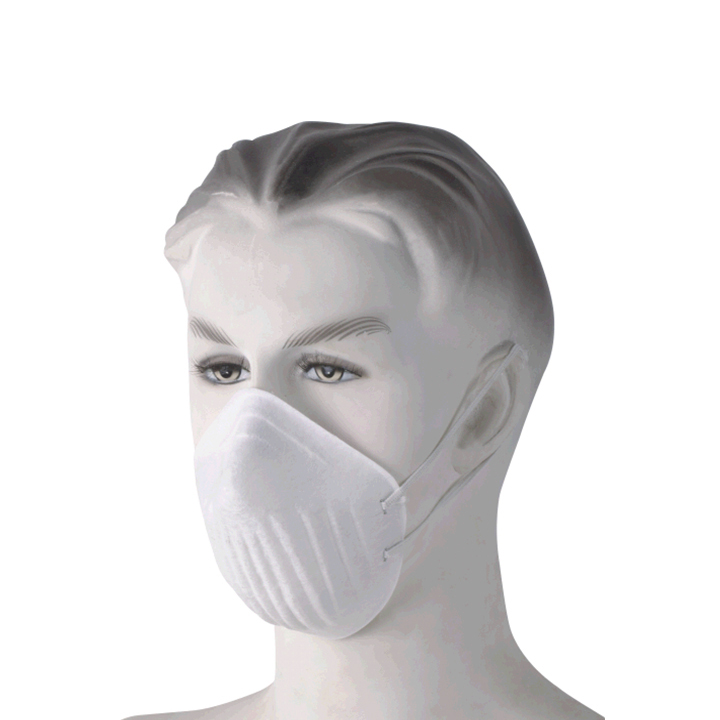In recent years, disposable face mask has become essential for daily protection. They help filter out harmful particles and provide a barrier against contaminants. Among the many types available, disposable face masks made from single layers are gaining attention. Today, we will explore the two most common types of single-layer disposable face masks: polyester and melt-blown polypropylene. We’ll compare their properties and help you understand which one suits your needs.
Types of Single-Layer Disposable Face Mask
a) Disposable Face Mask Made of Polyester

Polyester is a synthetic fabric widely used in disposable face mask manufacturing. Disposable face mask manufacturers use this material for its lightweight and durable nature. A polyester face mask typically consists of a single layer of nonwoven fabric. It offers comfort and breathability, making it suitable for daily use in low-risk environments.
Polyester masks have moisture-wicking properties, which help keep the skin dry. They are also more durable than many other fabric types, which makes them last longer. However, their filtration capacity is lower than other materials like melt-blown polypropylene. These masks are best suited for non-medical purposes, such as general dust protection or casual use.
b) Disposable Face Mask Made of Melt-Blown Polypropylene

Melt-blown polypropylene is another popular material used in disposable face masks. Disposable face mask manufacturers often choose this material for its high filtration efficiency. The melt-blown process creates very fine fibers that trap small particles effectively. These masks offer superior protection against dust, bacteria, and viruses compared to polyester.
A single-layer disposable dust mask made from melt-blown polypropylene provides excellent filtration while maintaining comfort. Despite its high performance, it remains lightweight and breathable. The fabric is also water-resistant, offering protection against moisture. Many disposable dust masks made from this material are used in medical and industrial applications, where higher levels of protection are necessary.
Comparison Between Polyester and Melt-Blown Polypropylene Face Masks
When comparing polyester and melt-blown polypropylene face masks, several factors come into play. Let’s break them down to help you choose the best option for your needs.
Filtration Efficiency
Melt-blown polypropylene face masks are known for their high filtration efficiency. The fine fibers of the fabric trap dust, bacteria, and other harmful particles. This makes melt-blown polypropylene masks ideal for environments with a higher risk of exposure to contaminants. On the other hand, polyester masks provide lower filtration. While they offer some protection, they are not suitable for high-risk situations like healthcare or industrial work.
Breathability and Comfort
Polyester face masks are lightweight and breathable, offering comfort during long periods of wear. They are perfect for general use in low-risk environments. In contrast, melt-blown polypropylene masks, while effective, are slightly less breathable. The denser structure of the fabric can reduce airflow, but the filtration benefits outweigh this drawback for those needing enhanced protection.
Durability
Polyester masks are known for their durability. The fabric is tough and resistant to wear and tear, making it more long-lasting. Melt-blown polypropylene masks are generally less durable, as the fine fibers can be more easily damaged. However, the superior filtration capacity of melt-blown polypropylene often compensates for this.
Water Resistance
Melt-blown polypropylene offers better water resistance compared to polyester. The fabric repels moisture, keeping the mask dry during use. This feature is particularly important in medical or industrial environments, where exposure to fluids is more likely. Polyester masks are less water-resistant, so they may become damp and less effective in such conditions.
Price
Polyester face masks are generally more expensive than melt-blown polypropylene masks. The production process for polyester masks involves more steps, which increases the cost. In contrast, melt-blown polypropylene is more affordable and easier to produce. As a result, disposable face mask manufacturers often produce polypropylene masks in larger quantities, making them more accessible at lower prices.
Which Type Is Right for You?
If you’re looking for a budget-friendly option and need basic protection, disposable dust masks made from polyester might be the way to go. They are comfortable, durable, and perfect for everyday use in low-risk environments.
However, if you require higher protection, such as for industrial work or healthcare settings, disposable dust face masks made from melt-blown polypropylene are a better choice. They offer superior filtration and better protection against airborne particles, bacteria, and viruses.
Conclusion
Both polyester and melt-blown polypropylene face masks have their advantages. Disposable face mask manufacturers produce each type to meet different needs. Polyester masks excel in comfort and durability but lack the high filtration efficiency of melt-blown polypropylene masks. Melt-blown polypropylene masks provide better protection but may not be as breathable or durable. The choice between the two comes down to your specific requirements and budget.
If you are considering sourcing disposable face masks for your business, be sure to consult reputable disposable face mask manufacturers and suppliers in China. They offer a wide range of options, including both polyester and melt-blown polypropylene masks, at competitive prices.


